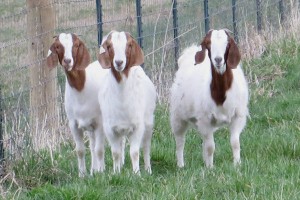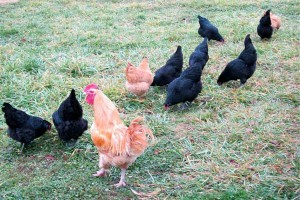I was in the kitchen washing breakfast dishes when I heard frantic baGawks and squawks in the yard. I threw open the screen door and rushed outside. My eyes caught a quick fluttering commotion at the edge of the cornfield, followed by complete stillness. I rushed over to survey the scene. No chicken blood or body parts, just a handful of feathers scattered in the grass. I looked down the long rows of thick corn. The ground was too dry; the culprit left no tracks to follow.
When I closed the coop for the evening I was relieved that our loss was small, only three hens were unaccounted for. The farmer wasn’t as optimistic. “He’ll be back,” he warned, and placed a .22 by the door.
The culprit returns

Coyote will travel a good distance for food. Once they have found a good source they return to it again and again. In spring coyote often hunt in packs like wolves. In fall grown pups break away from the family unit to hunt and stake out their own territory. This time of year mature crops and brush help camouflage coyote during a hunt. That September I was cautious each time I headed outside, not knowing who I would encounter or what to expect.
One morning I was outside doing chores. I had opened the coop to let the birds out for the day, but they had yet to wander far. Suddenly the rooster went on high alert. He stretched out his neck, held his head high, and began to hackle. I jumped on the hay wagon for a good view of the field. Sure enough, a rusty brown and gray coyote crouched between two rows of corn. I banged a shovel on the deck of the wagon as loud as I could. The coyote dashed back into the cornfield.
Coyote are most active in the morning and evening. Unfortunately grazing livestock keep the same schedule. Our neighbor had her entire goat herd wiped out by a pack of coyote in a single late summer’s eve.
Prior to 1919 coyote were not in Ohio. Less than one hundred years have passed, yet today coyote are present in every county. The rapidly growing coyote population and subsequent coyote problem in Ohio is evidence of just how well coyote adapt to new environments. Here in the hilly south of the state coyote stay hidden in the woods, but there have been reports of coyote attacks on people and pets in suburban and urban areas of Ohio.
Birds bite the dust

That September we lost two-thirds of our free range flock before the farmer put an end to the problem. The following spring he walked the entire fence line looking for holes the coyote could enter through. He filled any low areas he found. Finally, he added electric to the fence. We have not had a problem with predators since.
Trapping and shooting are proven prevention techniques. Alternatively, noise and light repellents can be used to scare coyote.
Some shepherds have great success outfitting sheep with livestock protection collars. The collars are filled with chemicals that poison the offenders when they instinctually go for the neck of their kill. Several of our fellow goat farmers raise guard animals alongside livestock. Dogs, donkeys and llamas form a bond with stock and protect them from predators.
STAY INFORMED. SIGN UP!
Up-to-date agriculture news in your inbox!











